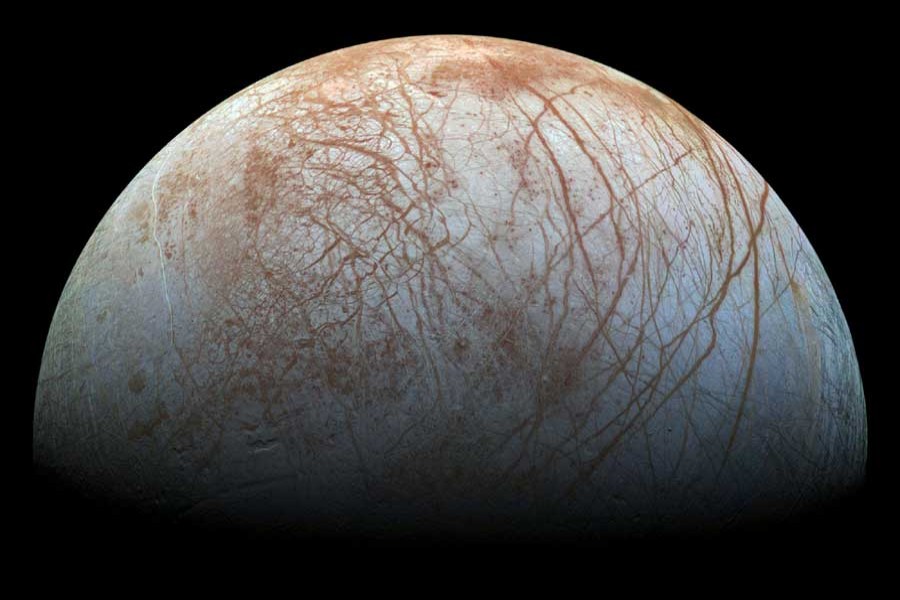
Published :
Updated :

Scientists have proposed a way to retrieve samples from Jupiter's icy moon, Europa, which is believed to contain a liquid ocean underneath that could hold microbial life.
Andrew Dombard, associate professor of earth and environmental sciences at the University of Illinois (UIC), along with colleagues, presented a solution by using a nuclear-powered tunnelling probe to go deep under the surface of the moon, according to a report by UIC.
“Estimates of the thickness of the ice shell range between 2 and 30 kilometres (1.2 and 18.6 miles), and is a major barrier any lander will have to overcome in order to access areas we think have a chance of holding biosignatures representative of life on Europa,” Dombard said.
Dombard and his group tested the concept for a ‘tunnelbot’ that would be able to pierce through Europa's shell made of ice, and go down far enough to hit the moon's ocean. The bot would be comprised of technical devices that would have the ability to search for signs of life or extinct life, as well as testing the habitability of the moon itself.
“We didn’t worry about how our tunnelbot would make it to Europa or get deployed into the ice,” Dombard said. “We just assumed it could get there and we focused on how it would work during descent to the ocean.”
Dombard and his spouse, D’Arcy Meyer-Dombardd, who is also an associate professor at UIC, are both part of the NASA Glenn Research COMPASS team – a group of scientists and engineers who create designs and technological solutions for space and science exploration, reports cnet.com.


 For all latest news, follow The Financial Express Google News channel.
For all latest news, follow The Financial Express Google News channel.